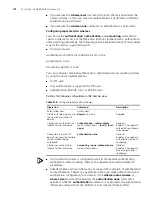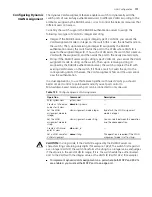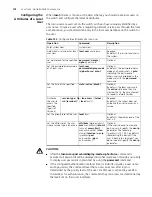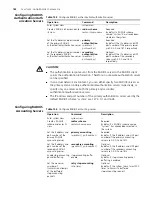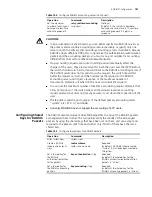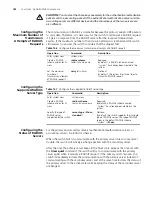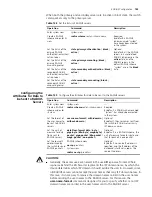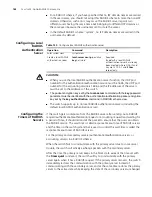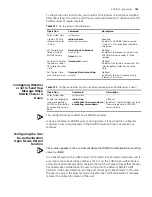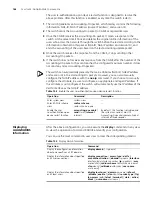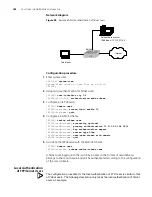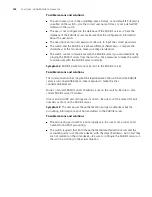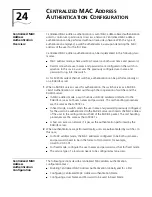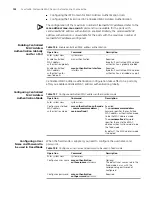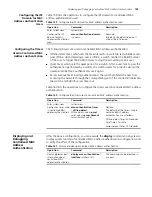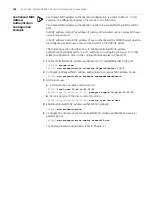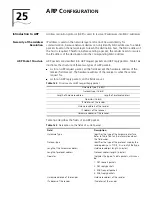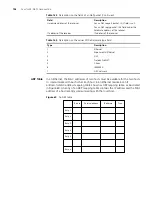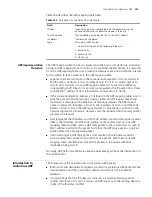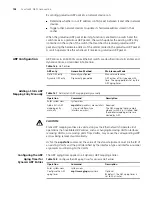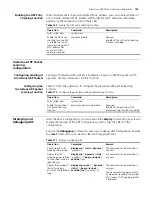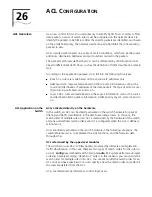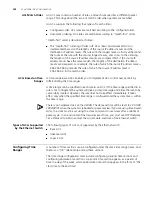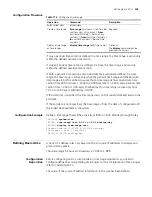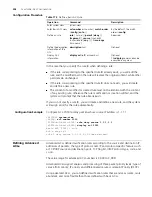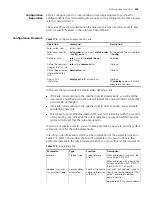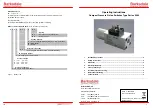
190
C
HAPTER
23: AAA&RADIUS C
ONFIGURATION
Possible reasons and solutions
:
■
The user name is not in the userid@isp-name format, or no default ISP domain is
specified on the switch—Use the correct user name format, or set a default ISP
domain on the switch.
■
The user is not configured in the database of the RADIUS server—Check the
database of the RADIUS server, make sure that the configuration information
about the user exists.
■
The user input an incorrect password—Be sure to input the correct password.
■
The switch and the RADIUS server have different shared keys—Compare the
shared keys at the two ends, make sure they are identical.
■
The switch cannot communicate with the RADIUS server (you can determine by
pinging the RADIUS server from the switch)—Take measures to make the switch
communicate with the RADIUS server normally.
Symptom 2
: RADIUS packets cannot be sent to the RADIUS server.
Possible reasons and solutions
:
The communication links (physical/link layer) between the switch and the RADIUS
server is disconnected/blocked—Take measures to make the links
connected/unblocked.
None or incorrect RADIUS server IP address is set on the switch—Be sure to set a
correct RADIUS server IP address.
One or all AAA UDP port settings are incorrect—Be sure to set the same UDP port
numbers as those on the RADIUS server.
Symptom 3
: The user passes the authentication and gets authorized, but the
accounting information cannot be transmitted to the RADIUS server.
Possible reasons and solutions
:
■
The accounting port number is not properly set—Be sure to set a correct port
number for RADIUS accounting.
■
The switch requests that both the authentication/authorization server and the
accounting server use the same device (with the same IP address), but in fact they
are not resident on the same device—Be sure to configure the RADIUS servers on
the switch according to the actual situation.
Summary of Contents for 4200G 12-Port
Page 10: ...8 CONTENTS...
Page 14: ...4 ABOUT THIS GUIDE...
Page 46: ...32 CHAPTER 5 LOGGING IN THROUGH WEB BASED NETWORK MANAGEMENT SYSTEM...
Page 48: ...34 CHAPTER 6 LOGGING IN THROUGH NMS...
Page 60: ...46 CHAPTER 9 VLAN CONFIGURATION...
Page 64: ...50 CHAPTER 10 MANAGEMENT VLAN CONFIGURATION...
Page 80: ...66 CHAPTER 13 GVRP CONFIGURATION...
Page 98: ...84 CHAPTER 15 LINK AGGREGATION CONFIGURATION...
Page 112: ...98 CHAPTER 18 MAC ADDRESS TABLE MANAGEMENT...
Page 126: ...112 CHAPTER 19 LOGGING IN THROUGH TELNET...
Page 162: ...148 CHAPTER 20 MSTP CONFIGURATION...
Page 274: ...260 CHAPTER 29 IGMP SNOOPING CONFIGURATION...
Page 276: ...262 CHAPTER 30 ROUTING PORT JOIN TO MULTICAST GROUP CONFIGURATION...
Page 298: ...284 CHAPTER 33 SNMP CONFIGURATION...
Page 304: ...290 CHAPTER 34 RMON CONFIGURATION...
Page 338: ...324 CHAPTER 36 SSH TERMINAL SERVICES...
Page 356: ...342 CHAPTER 38 FTP AND TFTP CONFIGURATION...
Page 365: ...Information Center Configuration Example 351 S4200G terminal logging...
Page 366: ...352 CHAPTER 39 INFORMATION CENTER...
Page 378: ...364 CHAPTER 40 BOOTROM AND HOST SOFTWARE LOADING...
Page 384: ...370 CHAPTER 41 Basic System Configuration and Debugging...
Page 388: ...374 CHAPTER 43 NETWORK CONNECTIVITY TEST...
Page 406: ...392 CHAPTER 45 CONFIGURATION OF NEWLY ADDED CLUSTER FUNCTIONS...

